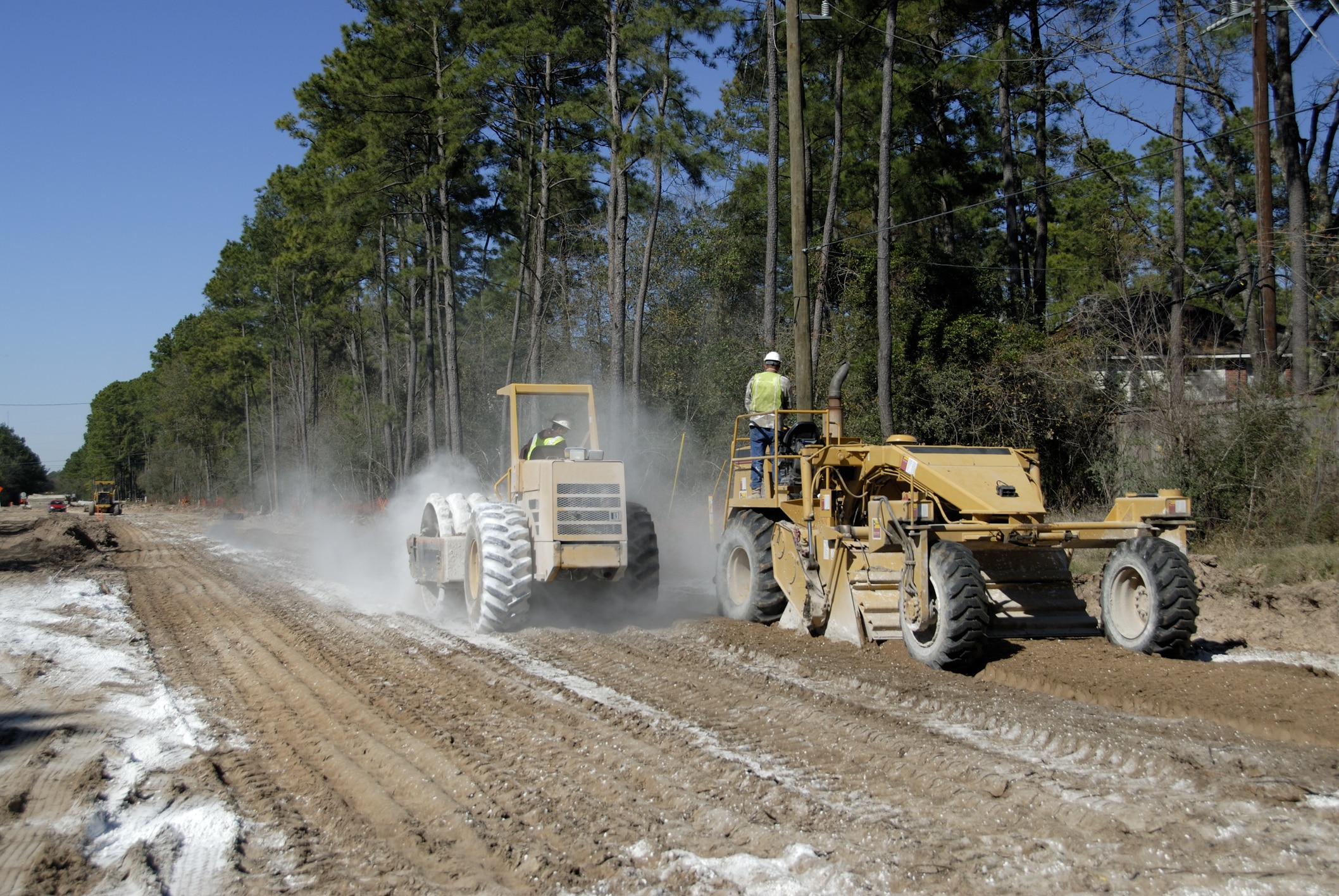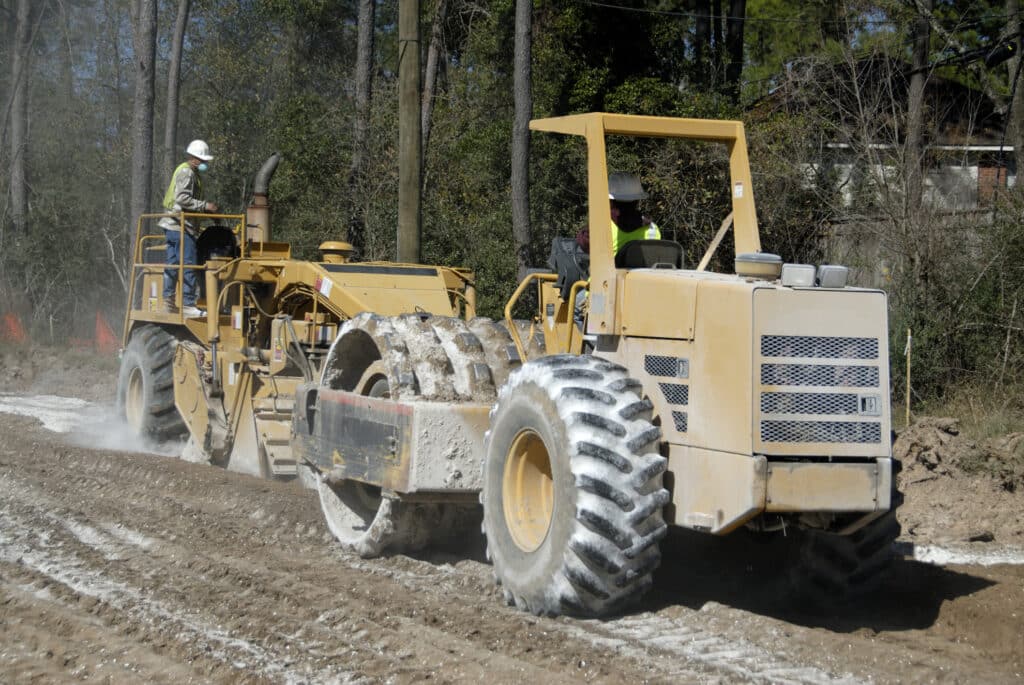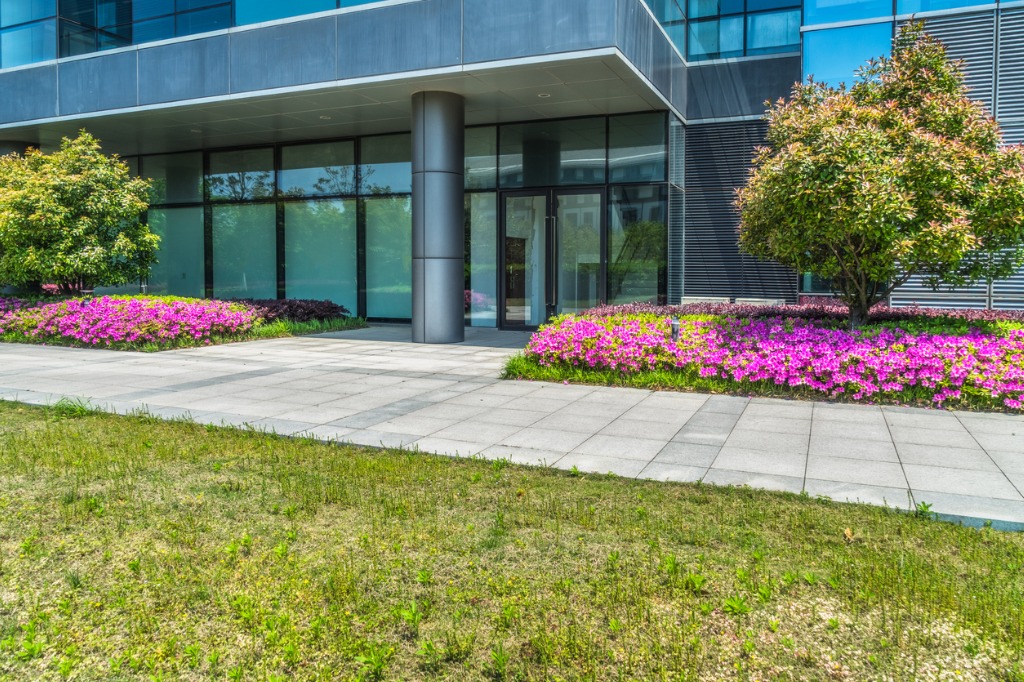Not many people know that landscaping is actually broken up into two different practices: softscaping and hardscaping. Read on to learn about these concepts.

What Is Soil Stabilization? Why Is It Important?
In the vast and intricate world of civil engineering, soil stabilization is a critical yet often overlooked component of the construction process. It serves as a pivotal piece of the construction puzzle, giving resilience and reliability to the foundation of our infrastructures. But what exactly is soil stabilization, and what does the process entail?
Soil stabilization refers to the alteration of soils to enhance their physical properties, ensuring safety, longevity, and efficiency throughout construction and environmental projects. In this blog post, we’ll explore the process of soil stabilization, including the various methods involved with the process, and provide techniques to help you determine the best method for your needs.
Whether you’re a construction industry professional or an aspiring engineer, this blog will examine the importance of soil stabilization and how it’s shaping the construction and concrete services industry’s future. Continue reading below to learn more and discover the difference professional concrete services can make by working with K&E Flatwork.
Understanding Soil Stabilization
The practice of soil stabilization is an indispensable aspect of modern construction that employs various ground integrity methods to augment the physical properties of the earth. As a critical factor in ensuring the reliability of building foundations, the techniques for soil stability address different aspects of soil property improvement.
- Proper stabilized soil provides a solid platform for concrete slabs and other structural elements.
- When stabilized, soil resists erosion, moisture infiltration, and subsequent soil volume changes, which are common causes of concrete cracking and settling.
- Quality soil stabilization translates to safe, sound structures and peace of mind for builders and occupants alike.
Soil stabilization is about improving the load-bearing capacity and refining consistency, reducing permeability, and preventing erosion. Understanding the soil’s inherent traits allows for an informed selection of appropriate stabilization methods. Here’s an outline of typical approaches to soil property improvement:
Chemical Stabilization: This stabilization methodology typically includes adding binding materials such as lime, cement, or other industry-approved stabilizers. These substances chemically alter soil properties to create a more cohesive and sturdy matrix.
Mechanical Stabilization: This method primarily involves the densification of the soil, which is achieved through compaction to increase load-bearing capacity. Additionally, integrating geosynthetics can reinforce the soil structure, offering improved stability and resistance to erosion.
Each method interacts differently with soil particles to achieve the desired stability. For instance, when you introduce lime into the clayey soil, the particles realign, and the soil transforms from a plastic and weak state to a strong and stable one.
Similarly, compaction forces air out of the soil, increasing its density and load-bearing capacity. These ground integrity methods are indispensable for laying a solid foundation for your construction endeavors. Given the wide variance in soil types and conditions across different sites, you may find that a tailored, site-specific stabilization methodology yields the most effective and durable results.

The Soil Stabilization Process
Your project’s success in soil stabilization implementation pivots on the meticulous execution of each phase within the process. Let’s dive into the critical steps you’ll encounter during the soil stabilization process:
Site Evaluation: A thorough analysis of the site’s soil composition and characteristics sets the groundwork. Soil testing informs you of parameters like plasticity, moisture content, and load-bearing capacity, which are imperative to designing an effective stabilization strategy.
Method Selection: Based on the initial soil assessment, your decision on whether to proceed with mechanical methods, such as compaction or to introduce chemical stabilizing agents, like lime or cement, will be instrumental in achieving the desired soil stability.
Preparation of Soil: Before stabilizing, the soil must be prepared. This usually involves excavating to the specified depth and homogenizing the material, ensuring uniformity for stabilizing agents to act effectively.
Stabilizing Agent Application: The next step involves precisely applying the chosen stabilizers. Consistent and even mixing of these agents throughout the soil is vital to building a stable foundation.
Mechanical Manipulation: Some soil stabilization methods require mechanical actions, such as compaction or rolling, to enhance the mix and impart the necessary density and strength to the treated soil.
Quality Control: Continuous monitoring and testing during and after the stabilization process confirm that the outcomes align with the project’s technical specifications. This might include testing the density and strength of the stabilized soil.
Completion and Curing: After the stabilization phase, a waiting period is often necessary for the material to cure, especially in the case of chemical stabilization. The soil’s performance is documented at this stage to ensure adherence to project standards.
Experience the K&E Flatwork Difference — Superior Concrete Flatwork Solutions
As you can see, soil stabilization is a process that lays the groundwork for every construction project. As a result, understanding the elaborate scope of soil stabilization is more than a technical necessity; it’s a critical factor in safeguarding the future structural integrity of your worksite. By enhancing soil stability, you ensure a firm foundation and deliver future-proof results that stand the test of time.
Are you looking for unparalleled expertise in commercial concrete solutions? Look no further than K&E Flatwork.
At K&E Flatwork, we pride ourselves on delivering projects on time and within budget, tailored to your unique requirements. With our dedication to quality, efficiency, and customer satisfaction, we guarantee superior concrete services.
Whether it’s warehouse floors, parking lots, sidewalks, or driveways, we have the skills and resources to handle it all. Our experienced team, armed with state-of-the-art technology and a deep understanding of the industry, is ready to transform your commercial projects with top-notch concrete solutions.
Don’t let subpar concrete work hinder the success of your projects. Choose K&E Flatwork for reliability and excellence in commercial concrete services. Contact us today to discuss your needs and take the first step towards concrete solutions that are built to last.


